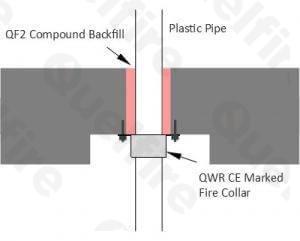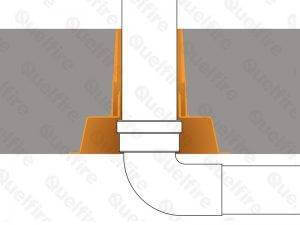Designers and installers of passive fire protection solutions often come across the choice of whether to use cast in fire collars or traditional retrofit fire collars to firestop pipe (or even electrical service) penetrations.
While the use of traditional retrofit collars can be justified in certain cases, especially in retro situations, most of time, if planned precisely and in advance, cast in fire collars prove to be significantly more cost and time effective on new build developments.
In this article, we are going to demonstrate this through a real-life example. Firstly, this is what the installation looked like:

The decision has been made to form recesses on all penetration points for where the pipe fittings/ junctions need to be installed close to the soffit to save ceiling height.
Let’s see what steps had to be taken to firestop these pipe penetrations:
- Extensive shuttering to create a recess
- Holes need to be diamond drilled for the pipes
- Collars have to be mechanically fixed, this often involves working at height
- Because the holes drilled are oversized, a shutter and backfill with fire protection compound is required around the pipe
Because this involves so many steps, and the coordination of several contractors, it not only takes a long time and costs a significant amount money, but also leaves more room for error.
Now, let’s see what this would look like using cast in fire collars:
- The collars are cast in while concrete is poured, forming an integral hole (and recess if manifold is used). No backfill, fixing or extra work is required.
And if there is a pipe fitting or junction to be installed close to the ceiling, a cast in collar with manifold (designed exactly for this scenario) can be used, as illustrated below.
Firestopping a pipe penetration using a retrofit fire collar:

Firestopping a pipe penetration using a cast in fire collar and manifold:

Quelfire’s QuelCast Cast in Fire Collar
If you have any further questions, please don’t hesitate to get in touch at technical@quelfire.co.uk.

